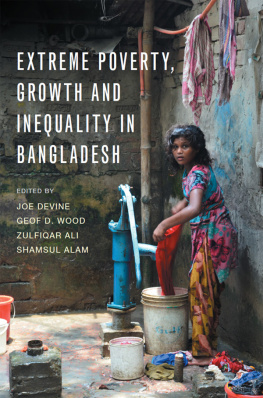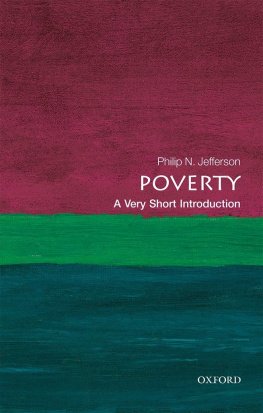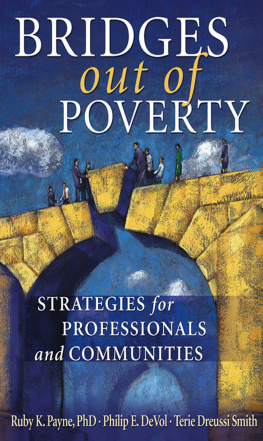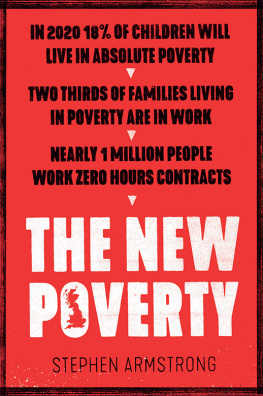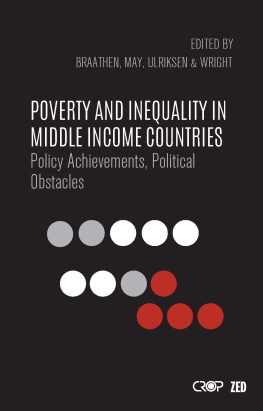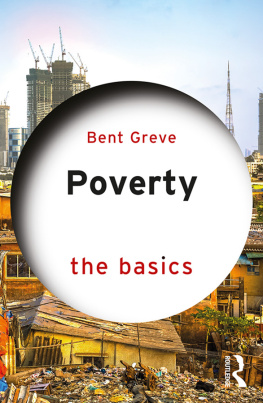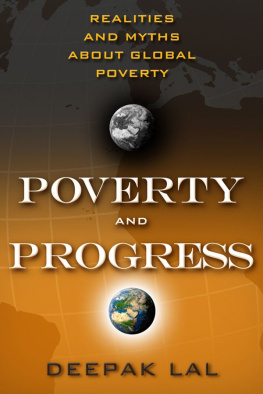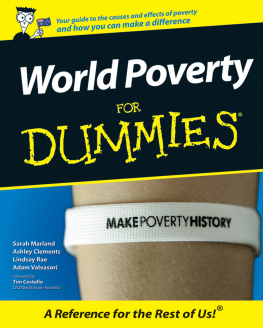S
P
O
T
L
I
G
H
T
O
N
O
U
R
F
U
T
U
R
E
New York
GENE BROOKS
POVERTY
AND OUR FUTURE
Published in 2022 by The Rosen Publishing Group, Inc.
29 East 21st Street, New York, NY 10010
Copyright 2022 by The Rosen Publishing Group, Inc.
First Edition
All rights reserved. No part of this book may be reproduced in any form without permission in writing from the
publisher, except by a reviewer.
Editor: Theresa Emminizer
Book Design: Michael Flynn
Photo Credits: Cover eric1513/iStock/Getty Images; (series background) jessicahyde/Shutterstock.com; p. 4 Igor
Alecsander/Getty Images; p. 5 N. Pipat/Shutterstock.com; p. 7 Arnold Sachs/Archive Photos/Getty Images; p. 8
Pongkiat Rungrojkarnka/EyeEm/Getty Images; p. 9 Mario Tama/Getty Images; p. 10 ssguy/Shutterstock.com; p. 11
Anton_Ivanov/Shutterstock.com; p. 12 Snehal Jeevan Pailkar/Shutterstock.com; p. 13 Tony Karumba/AFP/Getty
Images; p. 15 NurPhoto/Getty Images; p. 16 Dmytro Zinkevych/Shutterstock.com; p. 17 Mike Kemp/In Pictures/Getty
Images; p. 19 Ali Yussef/AFP/Getty Images; p. 20 Reg Speller/Hulton Archive/Getty Images; p. 21 Fotosearch/Archive
Photos/Getty Images; p. 23 Bennett Raglin/Getty Images; p. 24 Gideon Mendel/Corbis Historical/Getty Images; p. 25
Mark Sagliocco/Getty Images; p. 26 Pallava Bagla/Corbis Historical/Getty Images; p. 27 PETIT Phillippe/Paris Match
Archive/Getty Images; p. 29 Kevin Hagen/Getty Images.
Library of Congress Cataloging-in-Publication Data
Names: Brooks, Gene, 1982- author.
Title: Poverty and our future / Gene Brooks.
Description: New York : PowerKids Press, [2022] | Series: Spotlight on
global issues | Includes bibliographical references and index.
Identiers: LCCN 2020011057 | ISBN 9781725324251 (paperback) | ISBN
9781725324282 (library binding) | ISBN 9781725324268 (6 pack)
Subjects: LCSH: Poverty--Juvenile literature.
Classication: LCC HC79.P6 B676 2022 | DDC 362.5--dc23
LC record available at https://lccn.loc.gov/2020011057
Manufactured in the United States of America
Some of the images in this book illustrate individuals who are models. The depictions do not imply actual situations
or events.
CPSIA Compliance Information: Batch #CSPK22. For further information contact Rosen Publishing, New York, New York at 1-800-237-9932.
Contents
THE POVERTY PROBLEM ........................... 4
A HISTORY OF POVERTY ........................... 6
TYPES OF POVERTY .............................. 8
AROUND THE WORLD ............................ 10
CAUSES OF POVERTY ............................ 12
PEOPLE MOST AFFECTED .......................... 14
SOLUTIONS FOR POVERTY ......................... 16
FIGHTING POVERTY ............................. 18
POVERTY AND CLIMATE CHANGE .................... 24
SOLUTIONS IN TECHNOLOGY ....................... 26
SOCIAL PROGRAMS AND POVERTY ................... 28
HELPING SOLVE THE PROBLEM ...................... 30
GLOSSARY ................................... 31
INDEX ...................................... 32
PRIMARY SOURCE LIST ........................... 32
WEBSITES .................................... 32
THE POVERTY
PROBLEM
Would you be healthy if you didnt have
enough food to eat? What if you got sick and you
couldnt see a doctor? How good would your
grades be in school if your home didnt have
electricity? If you needed to work to help your
family, could you even go to school? You might
need to get a job, help your family farm, or search
for clean water. These are daily problems for many
people struggling with poverty, or the state of
being poor.
CHAPTER ONE
Many people in poverty must live on very
little. Today, more than 600 million people live
on less than $1.90 a day. This is known as the
international poverty line. The United Nations (UN)
has adopted a series of goals to help end extreme
poverty by 2030.
About 8 percent of the world population lives below the
international poverty line.
A HISTORY
OF POVERTY
For hundreds of years, most people believed
that poverty was unavoidable. Some people said
the poor deserved their situation. Some said
peoples life choices kept them poor. Some world
leaders believed that poverty was necessary. They
felt hunger could control people and keep them
working.
Around the late 1700s, people began to
realize that the way society was organized created
poverty. They began to understand that many
institutions help cause poverty. Working to
end poverty became part of the goal of good
governments.
In the 1960s, the poverty problem drew
more attention in the United States. President
Lyndon B. Johnson announced a war on poverty.
Government policies addressed the troubles of
poor families. This movement helped more people
learn about worldwide poverty.
CHAPTER TWO
In 1964, President Lyndon B. Johnson signed a bill
meant to reduce poverty in the United States.
TYPES OF
POVERTY
Every country around the world has its own
way of measuring poverty. The United States
measures poverty by how much money people
make. For example, Americans who earned less
than $12,760 in 2020 were below the poverty line.
Some ways measure absolute poverty and
relative poverty. According to the UN, absolute
poverty is when people lack at least two of seven
basic human needs. These needs include food,
education, health care, and shelter. People also
need clean water, sanitation , and the ability to
get information.
CHAPTER THREE
Relative poverty measures poverty in
comparison to other members of a society. More
people live in relative poverty in developed
countries than live in absolute poverty. Many poor
people in these countries have their basic needs
met, but they have at least 50 percent less than
others do.
If poverty lasts, its called long-term poverty. This has
serious eects on health and well-being.
AROUND
THE WORLD
Poverty is a problem around the world. Over
the past 30 years, the center of extreme poverty
has shifted from Asia to sub-Saharan Africa.
About 30 years ago, 1.9 billion people
were living in extreme poverty. Over 1 billion of
these people lived in India and China. However,
economic growth and new social policies in these
two countries mean that many people there are
no longer living in extreme poverty.
CHAPTER FOUR
By 2018, extreme poverty had fallen to 650


